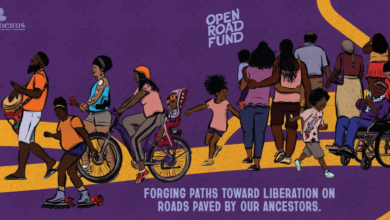New exhibit documents Black Minnesotans’ struggle for full rights in the Jim Crow era

[MUSIC PLAYING]
SUBJECT 1: This mob of over hundred people marched on an African-American house in October of 1909 to try to stop this family from moving in. The leading men of Minneapolis, as the newspaper called them, these are not the kind of people who want to be involved in mob violence. And they don’t have to because they have other tools that they can use.
[MUSIC PLAYING]
And there’s this tool that they become aware of. It’s called a racial covenant. And so just a few months after this confrontation, you see the first racial covenant appear in a Minneapolis property. And this is where you first see this racial language.
SUBJECT 2: Caucasians only, Aryans only, no negroes, or no members of African blood or descent.
[MUSIC PLAYING]
SUBJECT 1: 100% of them were aimed at Black people.
[MUSIC PLAYING]
SUBJECT 2: In many ways, racial covenants, this is ground zero of residential segregation in the United States. And racism have a very, very long history. But this particular deployment of racism is fairly new. And this idea was really made material through instruments like racial covenants.
SUBJECT 3: The law of the streets, the law of the courts working in consort to discourage Blacks from moving into White neighborhoods.
INTERVIEWER: That last voice you heard was the voice of Minnesota historian and author Bill Green. He spoke this weekend at the opening of a new exhibit at the Minnesota Historical Society created to further the state’s conversation about reconstruction and Jim Crow. The exhibit is called Black Citizenship in the Age of Jim Crow. And Bill Green is here now to talk about it. Bill, welcome back to Minnesota Now.
BILL GREEN: Thank you. Thank you for having me.
INTERVIEWER: Thank you. So you’ve had a chance now to see the Minnesota Historical Society’s exhibit on Jim Crow. What did you see what stood out to you?
BILL GREEN: Well, it was– it’s a fine display, I hope everybody gets a chance to see it. But it was also an opportunity to see contrasts between how discrimination existed in America at the time, both up North and in the South. There’s also hidden underneath the story. Is a notion that the North was very different from the South in terms of discrimination.
And Minnesota also had a reputation for being racially progressive, notwithstanding the existence of discrimination of housing and things of that nature. But what’s interesting about that is that policy makers, business leaders, and whatnot who supported the Black community provided funding and resources for activities to occur for Blacks where they could celebrate their race and their culture.
These same owners, these same policy makers, these same business owners discriminated against hiring Blacks. So you had those who were in favor of supporting Blacks, but not to the point of employing them. And I think that that’s characteristic of a place where the policy makers are mindful of how any support for Blacks could alienate them from a White base.
The attitudes of racial progress, though embraced by leaders of the community– White leaders of the community were not pushed down to the man on the street. So you have oftentimes a bifurcated society or sensibility towards race. Blacks could see a law passed that would ban lynching, for example, 1921. But within a matter of a couple of years, the sponsors of that bill with the support of political leaders across could not purchase a home in a White neighborhood.
And that occurred without any pushback on the part of policy makers. So Minnesota’s history of race is one of paradox. I think that’s the main thing I want to characterize here.
INTERVIEWER: Yeah. And I think it’s so wonderful what you said about. It makes a lot of sense that a lot can change on the books. But if you don’t have the buy in from everyone to follow that law, then that progress is really only on a piece of paper. And I know that it’s so interesting Minnesota became a state right around the time of reconstruction. And then we know reconstruction, of course, is the period following the civil war in which there was these attempts to rectify the issues of slavery really for the first time.
In your research, did you find some stories of families who were really thriving in those in those 50 years post-civil war in Minnesota? Tell me about them.
BILL GREEN: Oh, yes. I mean, that’s the other side of the Black experience in Minnesota. You have– even though discrimination existed, Black people learned to– well, they always knew how to create their own community. And they created their own institutions. The church became very, very key in creating a community of solidarity. And in fact, it also became a source of political enfranchisement or at least voice.
Political leaders would seek out the support of members of the Black church, for example. And you also had the evolution of a Black middle class forming. And that was oftentimes due to the fact that the Black community was growing large enough for African-Americans to support their own businesses, to support their own restaurants, and things of that nature.
So there is a thriving community evolving at the time of discrimination. And it also relied on the Black community being discrete with their successes. Because you did not want to necessarily draw attention to yourself from unwanted sources.
INTERVIEWER: And I do wonder how you see that time period and everything you described. How did that set the stage for Black people living in Minnesota today?
BILL GREEN: Well, you still have a lot of the inequities that existed back then that still exist today. The issues between African-Americans and the police, for example. That was a problem that was not unique, that is not unique to today but existed back at the turn of the century. The issues of education– excuse me. African-Americans were in schools but they often– they were not taught by African-American teachers.
And so on and so forth. There are different ways in which Blacks were beginning to venture into their own celebration of who they were, businesses, restaurants, things of that nature. But they did that within the context of discrimination.
INTERVIEWER: So sure. And I do wonder, as you take a look back, you’re so well-versed in history. But for people just attending maybe this exhibit or watching the film, what do you hope people take away from taking a look at the past?
BILL GREEN: Well, I think that first of all exhibits are important. They’re absolutely important. They remind us of graphic ways of what happened in the past. On the other hand, I think the exhibit in and of itself is insufficient in really educating the public and bringing the dialogue that you need. There has to be context. And so oftentimes just the presentation of imagery from the past becomes one dimensional.
And it also conveys the sense that not much more needs to be done because after all, Black men could vote well, Black women could not. And it’s a question of really looking at why is disparity a factor and why does it continue. The images from the display can serve as a springboard for those discussions. It can refine and elevate the issues that we need to address.
INTERVIEWER: Absolutely.
BILL GREEN: — in our paper that will not happen without.
INTERVIEWER: Absolutely. Minnesota author and historian Bill Green, thank you so much for your time and your insights.
BILL GREEN: Thank you. Thank you for having me.
























































